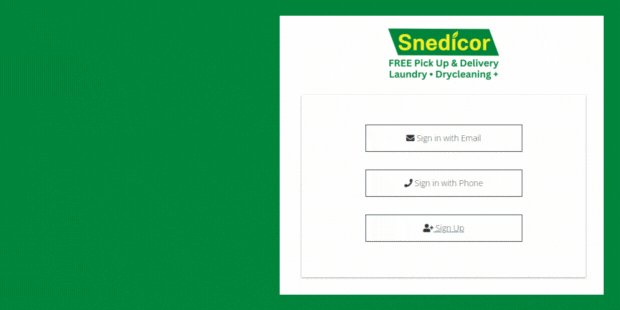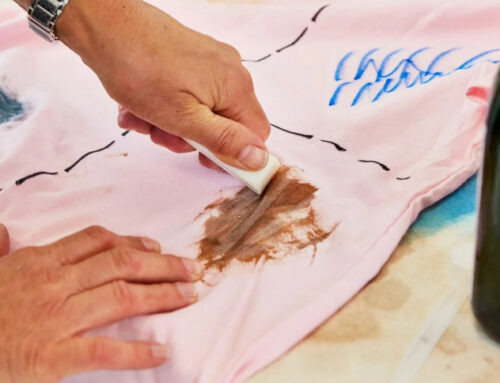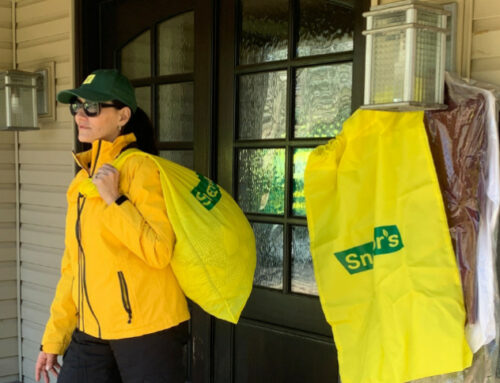By Jim Gilligan
If you’ve found this article, you’re probably wondering if an eco-friendly dry cleaning process is available to care for your finer garments. At this point, maybe you’ve seen some dry cleaning businesses advertise “Organic Dry Cleaning” on their website or with a sign in their window.
Everyone knows organic food is better for you and the planet. So organic dry cleaning sounds like a slam dunk, right?
Well… it’s complicated.

The use of the word organic in chemistry and the use of the word organic in food labeling are worlds apart.
That’s why, in this article, we examine the origins of the word “organic” and how the word gets used in the dry cleaning industry. After reading this article, you’ll be able to make an educated choice regarding the care of your garments, your bedding, and your SELF!
With over 40 years of experience in the dry cleaning business and as a lifelong outdoorsman, I’m constantly striving to improve Snedicor’s sustainability. So c’mon, let’s hit the trail and discover what organic dry cleaning is and what it’s not.
To start this journey, we need to delve into the meaning of the word “organic.”
Organic Chemistry vs. Organic Food Labeling
According to Wikipedia, Organic chemistry is a subdiscipline within chemistry involving the scientific study of matter in its various forms that contain carbon atoms. The range of chemicals studied in organic chemistry includes hydrocarbons (compounds containing only carbon and hydrogen) as well as compounds based on carbon.
According to the United States Department of Agriculture, Produce can be called organic if it’s certified to have grown on soil that had no prohibited substances applied including most synthetic fertilizers and pesticides.
In a nutshell, organic chemistry is not to be confused with organic labels on products like foods, fibers, and health and beauty products that are produced employing non-toxic ingredients and sustainable practices.
Gasoline is an organic chemical, but grapes can be raised organically.
What Exactly is Organic Dry Cleaning?
If a drycleaner advertises as being “organic,” it is probably using a petrochemical-based solvent.
They attach the word organic because these carbon-based chemicals fall under the umbrella of organic chemistry and have no relation to organic foods, fibers, or organic health and beauty products.
The two most common solvents used in the dry cleaning industry are sometimes advertised as organic by some dry cleaners even though they are toxic:
Perchloroethylene (Perc) (PCE)
Perchloroethylene (Perc) (PCE) is also known as Tetrachloroethylene.
It is a chlorinated solvent formulated from hydrocarbon, a petrochemical.
Perc is toxic and is considered a possible carcinogen. It is also a VOC (Volatile Organic Compound) that can negatively impact indoor air quality and the environment. Many experts recommend hanging garments cleaned in perc outdoors or in the garage so they can off-gas any perc fumes left over from the cleaning process before bringing them indoors. VOCs play a significant role in forming ozone and fine particulates in the atmosphere. Perc is heavier than water, so accidental releases can cause groundwater contamination.
Hydrocarbon
Hydrocarbon-based drycleaning solvents, such as DF-2000, are colorless, odorless liquids that are a byproduct of gasoline manufacturing. Although more environmentally friendly than perc, hydrocarbon is a VOC (Volatile Organic Compound) that can negatively impact indoor air quality and the environment. VOCs play a significant role in forming ozone and fine particulates in the atmosphere.
.png)
What Are Some Environmentally Friendly Dry Cleaning Solutions?
Liquid Carbon Dioxide Cleaning (CO2)
Liquid carbon dioxide cleaning involves cleaning clothes and other textiles in a bath of carbon dioxide under high pressure. CO2 is a naturally occurring chemical in our environment. However, it is considered a greenhouse gas, and CO2 dry cleaning machines emit a minute amount of carbon dioxide during every cleaning cycle.
Siloxane (Silicone)
Silicone is made from liquified sand (silicon dioxide). Silicone chemistry is entirely different from carbon chemistry. Siloxane is non-toxic and neither a VOC nor a groundwater contaminant. Siloxane has been used in health and beauty products like cosmetics and deodorants for decades. Because silicone is not a carbon-based chemical, it is not considered an organic chemical even though it is entirely safe. Are you confused yet? Remember our chemistry lesson at the beginning of this article 🙂
Wet Cleaning
The only clothes cleaning process I’m familiar with that can be considered organic in the sense of organic plants are specific wet cleaning systems that use soap made from organic plant materials mixed with water.
Conclusion
In this article, you learned that the word organic has multiple meanings and that organic chemicals are not at all related to organic food, fiber, or health and beauty products.
Now you know that dry cleaners who tout their process as organic could very well be using toxic chemicals to clean clothes.
If you want to learn more about the different dry cleaning solvents in use today, check out my article on the subject.
Suppose you’re ready to try our eco-friendly GreenEarth Cleaning and Harmony Wetcleaning solutions risk-free. In that case, we have self-serve and full-service options on our website.






